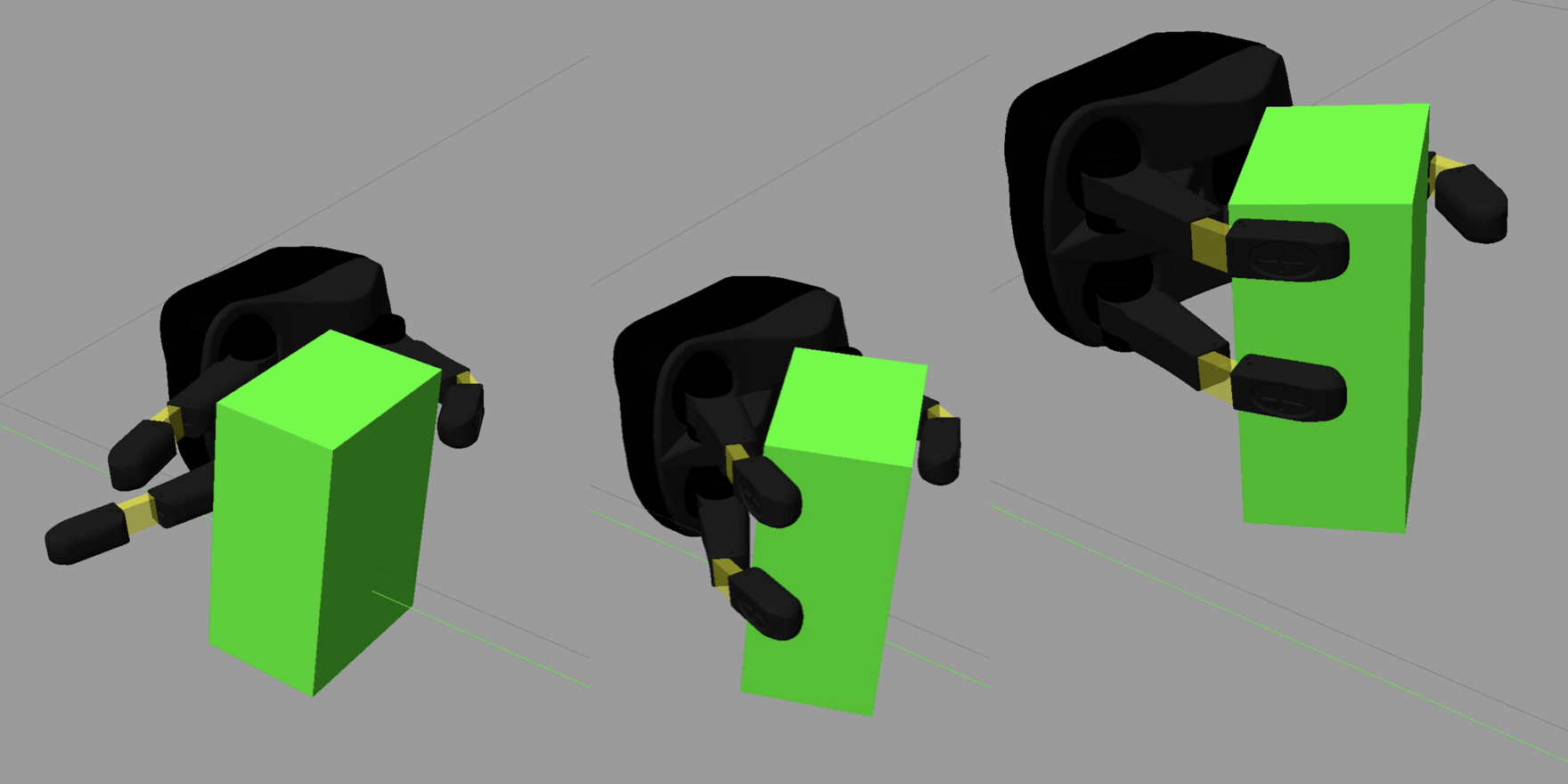The Role of Tactile Sensing in Learning and Deploying Grasp Refinement Algorithms
A long-standing question in robot hand design is how accurate tactile sensing must be. This paper uses simulated tactile signals and the reinforcement learning (RL) framework to study the sensing needs in grasping systems. Our first experiment investigates the need for rich tactile sensing in the rewards of RL-based grasp refinement algorithms for multi-fingered robotic hands. We systematically integrate different levels of tactile data into the rewards using analytic grasp stability metrics. We find that combining information on contact positions, normals, and forces in the reward yields the highest average success rates of 95.4% for cuboids, 93.1% for cylinders, and 62.3% for spheres across wrist position errors between 0 and 7 centimeters and rotational errors between 0 and 14 degrees. This contact-based reward outperforms a non-tactile binary-reward baseline by 42.9%. Our follow-up experiment shows that when training with tactile-enabled rewards, the use of tactile information in the control policy's state vector is drastically reducible at only a slight performance decrease of at most 6.6% for no tactile sensing in the state. Since policies do not require access to the reward signal at test time, our work implies that models trained on tactile-enabled hands are deployable to robotic hands with a smaller sensor suite, potentially reducing cost dramatically.
PDF Abstract
